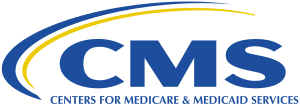Medicaid facts for kids

Medicaid is a special government program in the United States. It helps people who have limited income and resources get health insurance. Think of it as a way for families to get the medical care they need, even if they don't have a lot of money.
This program is mostly managed by each state government. However, the federal government also helps pay for it and sets some basic rules. States have a lot of freedom to decide who qualifies and what services are covered.
Medicaid started in 1965. It grew a lot after a law called the Affordable Care Act (ACA) was passed in 2010. In most states, if a household's income is up to 138% of the federal poverty line (meaning they don't earn much money), they can get Medicaid. Some states chose not to expand Medicaid under the ACA, so their income limits might be lower.
Medicaid is the biggest source of money for health services for people with low incomes in the U.S. In 2022, about 85 million people, including those with disabilities, received free health insurance through Medicaid. It even paid for half of all births in the U.S. in 2019! The program costs hundreds of billions of dollars each year, with both the federal government and states contributing. All states have participated in Medicaid since 1982. To get Medicaid, you usually need to be a U.S. citizen or a qualified non-citizen. This includes low-income adults, their children, and people with certain disabilities. In 2022, nearly half of all people on Medicaid or CHIP were children.
Medicaid also helps pay for long-term care, like nursing home stays or help at home for those with low incomes. This is a huge help for many families. The U.S. Centers for Medicare & Medicaid Services, located in Baltimore, Maryland, oversees the program at the federal level. Studies show that Medicaid helps people stay healthier, get the care they need, and feel more financially secure.
How States Run Medicaid
Each state runs its own Medicaid program. Sometimes, states combine Medicaid with other programs, like the Children's Health Insurance Program (CHIP). This means the same office might handle both. Some local areas might also have their own health programs for people who can't afford care.
Even though states don't have to join Medicaid, all of them have since 1982. Some states hire private health insurance companies to manage Medicaid. Other states pay doctors, clinics, and hospitals directly. Medicaid can cover many different services, and what's covered can vary by state.
Some common services covered include care for people with mental disabilities, prescription medicines, and nursing home care for people under 21. Less common services might include certain types of religious health care or special breathing care.
Most states have their own names for their Medicaid programs. Here are a few examples:
- Arizona: AHCCCS
- California: Medi-Cal
- Connecticut: HUSKY D
- Maine: MaineCare
- Massachusetts: MassHealth
- New Jersey: NJ FamilyCare
- Oregon: Oregon Health Plan
- Oklahoma: Soonercare
- Tennessee: TennCare
- Washington: Washington Apple Health
- Wisconsin: BadgerCare
Medicaid vs. Medicare
It's easy to confuse Medicaid with Medicare, but they are different!
- Medicare is a federal program mainly for people aged 65 or older. It also helps younger people with certain disabilities or serious kidney disease. Medicare has different parts that cover hospital bills, doctor visits, and prescription drugs.
- Medicaid is for people with low incomes, no matter their age. It's funded by both federal and state governments. To get Medicaid, your income and financial resources must be below a certain level. This is different from Medicare, where income doesn't matter. Medicaid also covers a wider range of health services than Medicare.
Some people are lucky enough to qualify for both Medicare and Medicaid. They are sometimes called "dual eligibles." This means they get help from both programs for their health care needs.
What Medicaid Covers
Medicaid offers two main types of help:
- Community Medicaid helps people who have little or no health insurance. It covers regular medical care like doctor visits, hospital stays, and prescriptions.
- Nursing Home Coverage helps pay for the cost of living in a nursing home if someone needs that kind of care and meets the income rules. The person usually pays most of their own income towards the nursing home costs, keeping a small amount for other expenses.
Some states have a program called the Health Insurance Premium Payment Program (HIPP). This program allows Medicaid to pay for a person's private health insurance. This can be helpful if someone already has a private plan through a job.
Medicaid also covers dental services. For people under 21 who qualify for Medicaid, dental care is required. This includes pain relief, fixing teeth, and keeping teeth healthy. There's also a program called Early and Periodic Screening, Diagnostic and Treatment (EPSDT) for children. It focuses on finding and treating health problems early. If a child needs dental treatment, Medicaid is responsible for paying for it.
Who Can Get Medicaid?
While the federal government sets the main rules for Medicaid, each state runs its own program. This means the exact rules for who qualifies can be different from state to state. Sometimes, an applicant might not be approved.
Medicaid is for people with low incomes, but just having a low income isn't the only rule. You also need to fit into a specific group. Some of these groups include:
- Low-income children
- Pregnant women
- Parents of children who qualify for Medicaid
- Low-income people with disabilities who receive other government help (like SSI or SSD)
- Low-income seniors aged 65 and older
The exact details of how each group is defined can change from one state to another.
Images for kids
See also
 In Spanish: Medicaid para niños
In Spanish: Medicaid para niños


